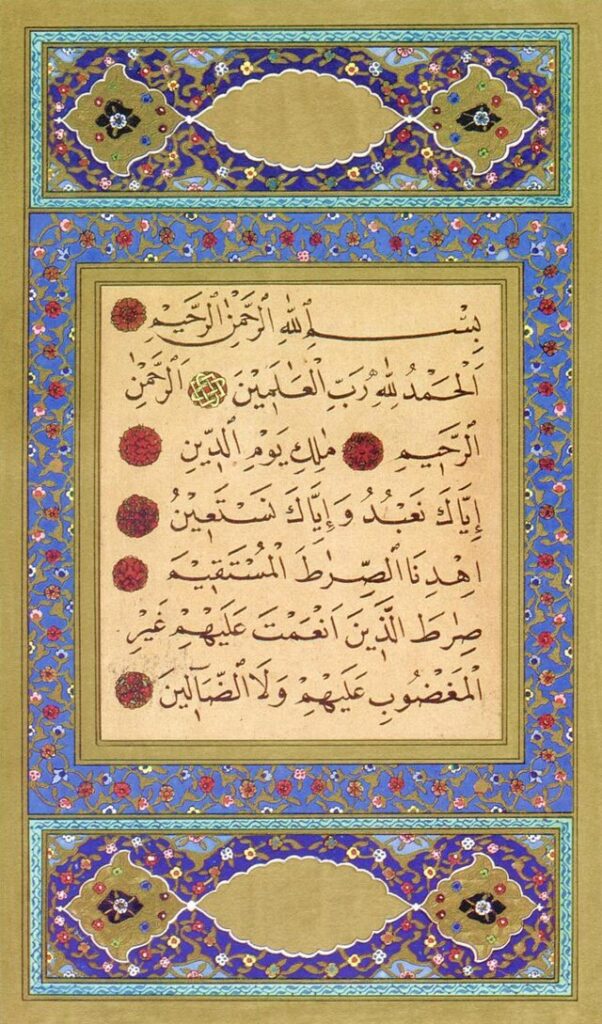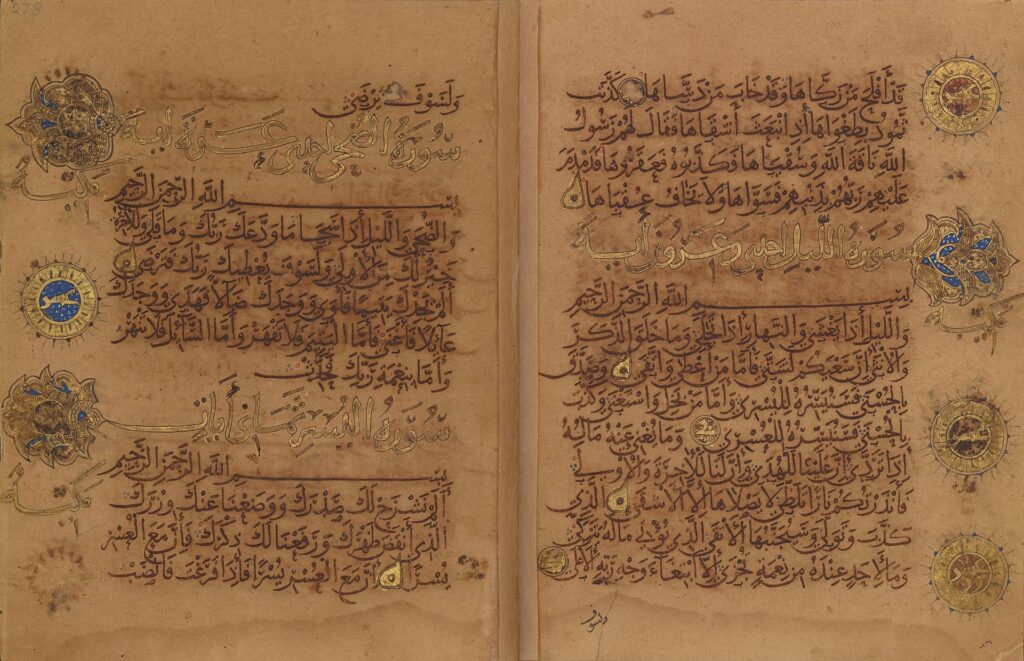Mohamed Zakariya: American Master of Arabic Script Calligraphy

By: Arwa Almasaari / Arab America Contributing Writer
Zakariya’s passion for calligraphy began when he noticed an elegant script while looking into the window display of a rug store on Wilshire Boulevard in Santa Monica. Captivated by its beauty, he stepped inside and asked the Armenian shopkeeper, “What is this?” The shopkeeper replied, “It’s a piece of Muslim calligraphy—but it’s too expensive for you, kid!” Those words sparked determination in young Zakariya. If he couldn’t buy it, he decided, he would learn to create it himself. He taught himself Arabic and read everything he could find about calligraphy.
The scarcity of resources and the lack of proper calligraphy tools didn’t deter him from pursuing his passion. Drawing on his experience in woodworking, he crafted his own calligraphy pen, or qalam, though it wasn’t perfect. As for ink and paper, he experimented with whatever materials he could find.
His background contributed to his success as a calligrapher. Zakariya was born in Ventura, California. At the age of 18, he was expelled from high school after punching a fellow student. Determined to distance himself from his toxic friends, he moved and found work elsewhere. He eventually found a job as a machinist in a small factory serving the aerospace industry.
A Life-Changing Journey to Morocco and Embracing Islam
Eager to travel and explore the world on a tight budget, 19-year-old Zakariya followed the advice of a travel agent and headed to New York. He boarded a Yugoslavian freighter bound for Morocco for just $50. Upon arriving in Morocco, he was immediately captivated by the culture, language, and Islam. Drawn by the sight of a man in a turban, Zakariya followed him until the stranger entered a mosque. Back in California, Zakariya began studying Arabic and Islam through books from his local library and bookstores.
In his early journey to mastering calligraphy, Zakariya tried to replicate the script from photographs of a Kufic Quran and ancient manuscript pages he found in the library. He also practiced by copying the script from a 19th-century Persian Quran he bought from an Iranian antique dealer. During this time, he was also learning about Islam and the Quran. His connection to Islam grew so strong that he took a three-hour bus ride to the nearest mosque, where he said the shahada, and changed his name to Mohamed Zakariya.

Despite the intertwined journeys of learning Arabic and Islam, Zakariya suggests avoiding adjectives like “Islamic” and “Arabic,” often used to describe calligraphy in Arabic script. Instead, he proposes calling it “Arabic script calligraphy” to make it more inclusive, noting that many non-Arabs and non-Muslims are also studying this art.
Informal Training
From 1964 to 1966, Zakariya lived in Morocco and England, where he studied art, Islam, and Arabic in libraries and mosques. He sharpened his skills by carefully replicating the work of 11th-century Baghdad master Ibnul-Bawwab. These travels significantly improved his skills, and he eventually began earning money from his work.

Zakariya still felt there was room for improvement. During a conversation with the late Dr. Esin Atil, the then curator of Islamic art at the Freer Gallery in Washington, he learned about the newly founded Research Center for Islamic Art, History, and Culture (IRCICA). Recognizing his talent, Dr. Atil introduced Zakariya to Ekmeleddin Ihsanoglu, who accepted him as a candidate for study.
A Turning Point
After 23 years of informal training, a turning point in Zakariya’s career came in 1984 in Istanbul. The IRCICA presented him with a pivotal opportunity. “Let us offer you a deal,” Dr. Ekmeleddin Ihsanoglu said. “To make progress in calligraphy, you must give up everything you’ve learned and start again, from the beginning, with your teacher, Hasan Celebi. If you accept, we will support you.” Hasan Celebi, the successor to the renowned calligrapher Hamid Aytac, was considered the leading calligrapher in Turkey and perhaps the entire Islamic world.
Zakariya admits that being told to start over at the age of 44, after 23 years of practicing calligraphy, was difficult. However, instead of letting his pride take over, he accepted the offer and pursued formal training for the first time. That afternoon, he went straight to Selam-i Ali Cami, where Celebi was the imam. The mosque’s interior captivated him, with Hasan Celebi’s stunning calligraphy adorning the walls. Zakariya instantly knew he had made the right choice to study under Celebi.
Formal Training and Mentorship in Istanbul

Because Zakariya’s stay in Turkey was limited to just a month, he met with Celebi every afternoon, rather than the usual weekly sessions, to receive more frequent feedback on his work. During this time, he devoted most of his days to practice. Afterward, Zakariya and Celebi agreed to continue their lessons remotely, exchanging work through the mail between the U.S. and Turkey.
Zakariya’s time in Istanbul was truly eventful. In addition to studying under Celebi, he had the opportunity to learn from Dr. Ali Alparslan, a professor of Persian literature at Istanbul University. Dr. Alparslan, a student of the renowned Necmeddin Okyay—the last living calligrapher mentioned in the 1955 book Son Hattatlar—played a key role in his education. During his stay, Zakariya was also invited to meet Ugur Derman, a distinguished calligrapher, at IRCICA. These esteemed figures collectively introduced him to the world of Ottoman calligraphy, sparking his interest in both Ottoman and modern Turkish.
After three and a half years of intensive practice under Celebi’s supervision, Zakariya received the good news in 1987 that he was ready to receive his certificate. Throughout his journey, he maintained strong relationships with his mentors. In 1998, Zakariya translated Ugur Derman’s Art of Calligraphy from Turkish into English, further solidifying his connection to the field.
A Student for Life
In 1997, Zakariya received his second certificate in calligraphy, earning his icazet in Taliq from Ali Alparslan at IRCICA. Despite these accomplishments, he still aspires to earn icazets in Celi Sulus and Celi Nestalik.
Arwa Almasaari is a scholar, writer, and editor with a Ph.D. in English, specializing in Arab American studies. She often writes about inspirational figures, children’s literature, and celebrating diversity. You can contact her at arwa_phd@outlook.com
Check out our blog here!








